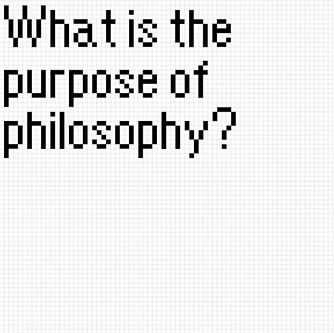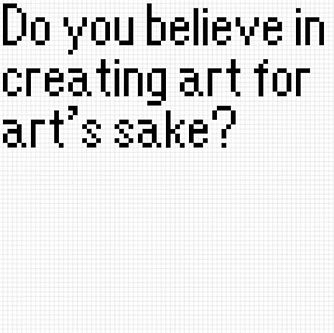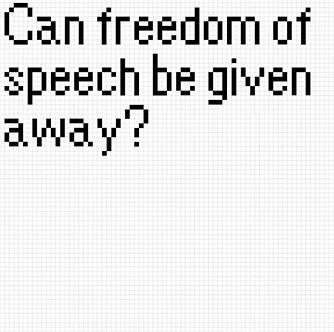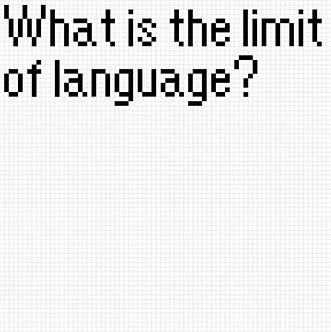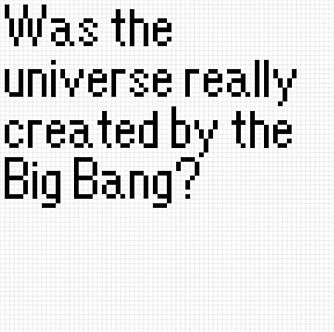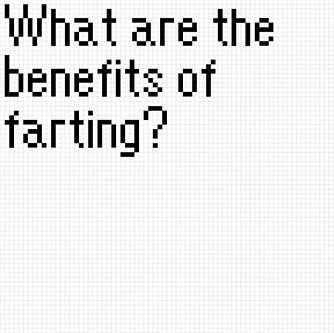
Ai Weiwei is a leading contemporary artist and activist renowned for his powerful works that explore themes of freedom, politics, and human rights. His diverse portfolio spans sculpture, installation, photography, and social media. Ai’s art challenges societal norms and provokes thought, making a significant impact on global art and culture.


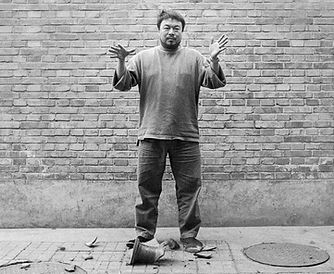
c
Dropping a Han Dynasty Urn, 1995
/Printed 2017
/Three gelatin silver prints
/148 x 121 cm each
How can the destruction of an artifact also be an act of preservation? Dropping a Han Dynasty Urn by Ai Weiwei is a highly provocative work of art. This series of three black and white photographs portray the artist holding a 2,000-year-old Han dynasty urn that, frame by frame, he drops, it falls, and shatters. As much a work of
photography as a work of performance art, in each still an unaffected Ai looks directly at the camera aware of his destructiveness. In fact, to capture the action on film (rather than digital photography, which lets you review the image immediately), the artist actually broke two ceramic vessels, just in case. This kind of blatant destruction of artifacts may seem highly irreverent, yet it also forces viewers to consider issues of transformation and destruction of the past.
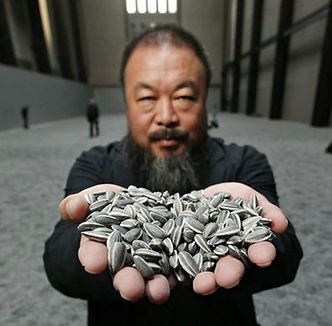
Sunflower Seeds, 2010
/Handcrafted porcrlain seeds
/Dimentions Variable
This art project consisting of countless handcrafted porcelain sunflower seeds, each one apparently identical, each one wholly unique: however realistic they might seem, every seed has been individually hand-sculpted and hand-painted by specialists hailing from the Chinese city of Jingdezhen.
The symbol of the sunflower was ubiquitous during the Cultural Revolution in China in the 1960s and 1970s, and was often used as a visual metaphor for the country's Communist leader Chairman Mao as well as its whole population. In Sunflower Seeds, Ai examines the complex exchanges between the one and the many, the individual and the masses, self and society.
The sunflower seeds are intricately and individually handcrafted, prompting a closer look at the Made in China phenomenon commonly associated with cheap mass-produced goods.

Sunflower Seed, 2024
/38 x 38 cm
/Children’s toy bricks on baseplate in bespoke box.
/Edition of 100, accompanied by a signed and numbered certificate
For Ai’s limited edition, Sunflower Seed, 2024, an image of a single sunflower seed has been assembled by hand using children’s toy bricks. Ai has been exploring the medium of toy bricks since 2014 with his work, Trace, to more recent works such as Water Lilies #1, 2023. Ai believes that the process of slowing down and assembling by hand, whether making a porcelain sculpture of a sunflower seed or an image of a sunflower seed from individual toy bricks, is important in today's fast paced and technology-oriented world. The limited edition, much like the Turbine Hall commission, is a reflection on each piece being a part of the whole, a commentary on the relationship between the individual and the masses.

Zodiac Charms Necklace, 2023
/Chain of 12 Zodiac Charms
/Hand-cast in 999 pure gold
/Length of the necklace: 59 cm, adjustable
/In a clamshell box with a booklet
/Edition of 48
/Signed and numbered
With the Zodiac Charms, Weiwei returns to his seminal 2010 work Circle of Animals/Zodiac Heads, an exploration of history, authenticity, and cultural dialogue. In this new, exclusive jewelry version on the theme, he turns to the multifaceted personal meanings the Chinese zodiac has held over the centuries. The charm has been sculpted by the artist based on its appearance in the earlier work and hand-cast in 999 pure gold.
This piece invites wearing the signs of the zodiac as a charm, a custom that goes back almost as far as the concept of the zodiac itself. Fittingly, the reverse of each charm carries the name of the animal sign in Chinese small seal script, an ancient form of calligraphy standardized at the start of the Qin dynasty around 220 BCE. The Zodiac Charm has been sculpted based on its appearance in the Circle of Animals.
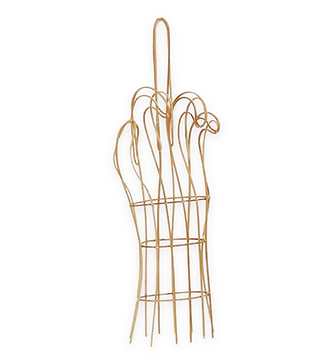
Middle Finger, 2022
/31 x 13 x 5 cm
/Bamboo
/Edition of 100
This new project gives everyone the chance to send a message toward social responsibility and the importance of standing for our own values, questioning our adherence and acceptance towards governments, institutions and establishments.
Although the use of the middle finger as a symbol of protest is certainly not innovative or pioneering, think also of Cattelan's monumental sculpture L.O.V.E, the one proposed by Ai Weiwei with Avant art is certainly a project with a great viral potential.
Study of Perspective in Glass, 2018-2019
/Set of 6
/Murano Glass Casting
/9 × 12.5 × 10 cm (3 1/2 × 4 9/10 × 3 9/10 in)
/Limited edition
/Hand-signed by artist, Signed and numbered on accompanying certificate and inscribed on the bottom
This precious edition of 100 Study of Perspective in Glass, 2019 in six different colours nods to the series Study of Perspective, pointing out to the artist’s deepest beliefs regarding freedom of speech and democratic values. The translation in Murano glass of the iconic Ai Weiwei’s middle finger in six different colours, is powerful and yet elegant. The sculptures, made out from the artist´s own hand cast, embody the deep and engaged message of Study of Perspective series in an edition of precious material and superlative craftsmanship: the innate light and airy qualities of the glass melt with the sturdiness of the design producing a rare effect of beauty and mystic power.


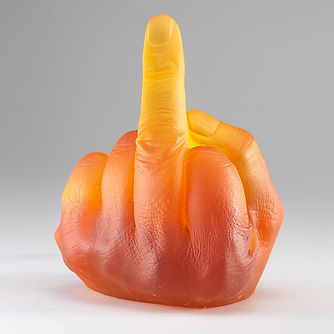


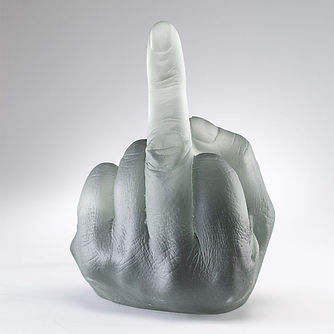


Takeout Box, 2022
/18 x 13 x 5 cm
/Murano glass
/Edition of 100
A takeout box is a disposable food container, usually made of Styrofoam. Its widespread use around the world has made it a symbol of our times and its globalization.
Ai Weiwei made such a box out of marble for the first time in 2015. For this edition, he collaborated with the Berengo Glass Studio and reinterpreted his own work in glass.
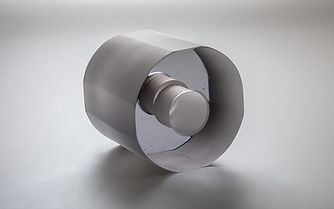
Toilet Paper, 2022
/14 x 14 x 13.5 cm
/Murano glass
/Edition of 100
In collaboration with Ai Weiwei and Wang Fen Berengo Studio is delighted to have contributed to the new online space ‘Maybe Art.’ Founded by Wang Fen in 2021 the company “Maybe Art” has developed an online platform together with Ai Weiwei. The virtual space is dedicated to the artist’s smaller artworks, and all pieces shown on the platform are limited editions and made exclusively for the site.
Toilet Paper, 2022 on the other hand is an artwork that references a very specific moment at the start of the Covid pandemic when the material became scarce in supermarkets worldwide as a result of panic buying from consumers. In this way the work looks in a bemused way at the fragility of society, immortalising a single moment in history forever.

Parrot Feathers, 2022
/67 x 54 cm
/Print - Mezzotint etching
/Edition of 25
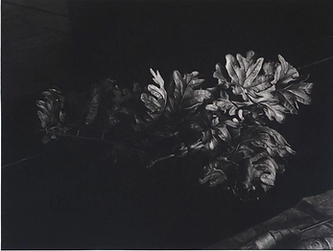.png)
Oak Leaves, 2022
/73 x 60 cm
/Print - Mezzotint etching
/Edition of 25

Guardian, 2024
/60 x 60 cm
/2 colour silkscreen with a metallic glitter base layer
/Printed on 410 gsm Somerset tub sized radiant white paper
/Edition 0f 1601
In Chinese tradition, a Door God is placed at an entrance or threshold to protect those inside from harm. By casting himself as this totemic figure, Weiwei acknowledges his standing in global consciousness, draws parallels with his life as an artist, and attempts to resolve the two.
Familiar motifs nod to the negative influences that Weiwei, in divine form, might ward off – from censorship and propaganda to corruption and surveillance. Red, meanwhile, promises good fortune for the year ahead.
To create the edition, printers at Make-Ready developed a new technique designed to echo a ceramic tile or cast concrete in silkscreen form. Bespoke gold ink ‘overloaded’ with metallic pigment and glitter is applied to the paper as a solid layer, then veiled by a layer of vibrant red to reveal an intricate illustration in negative space.


Finger Series Mask
/1 from a series of 4 from a collection of 20
/screenprints each on a polypropylene fabric face mask
Each (without elastic):9.5 × 17 cm
(3 3/4 × 6 11/16" )
/Drawings and Prints
Sunflower Seeds Mask
/1 from a series of 4 from a collection of 20
/screenprints each on a polypropylene fabric face mask
Each (without elastic):9.5 × 17 cm
(3 3/4 × 6 11/16" )
/Drawings and Prints

Cats and Dogs, 2019
/90 x 90 cm (35.4" x 35.4")
/100% silk scarf.
/Handwoven and hand-silkscreened.
/Finished with hand-rolled edges.
/Edition of 2,500
The red scarf takes its motif from a papercut created by Ai Weiwei as part of his Papercut Portfolio. This work reflects on his artistic journey from the 1990s, when he returned to Beijing after a decade-long stay in New York to find his own artistic identity.

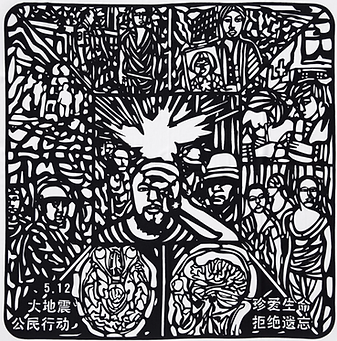
Haircut, 2019
/25.4 x 25.4 cm (10" x 10")
/100% silk scarf.
/Handwoven and hand-silkscreened.
/Finished with hand-rolled edges.
/Edition of 2,500
The blue scarf takes its motif from a papercut created by Ai Weiwei as part of his Papercut Portfolio. Reflecting on his participation in documenta XII in Kassel 2007, when he made it possible for 1,001 Chinese compatriots to travel to the German city.
Citizens’ 2019
/25.4 x 25.4 cm (10" x 10")
/100% silk scarf.
/Handwoven and hand-silkscreened.
/Finished with hand-rolled edges.
/Edition of 2,500
The black scarf takes its motif from a papercut created by Ai Weiwei as part of his Papercut Portfolio.
Investigation, reflecting on the somber aftermath of the Sichuan earthquake in 2008 and his subsequent activism to clear up why so many victims could be found especially among schoolchildren.




81 Questions, 2024
/Series of 81 Questions
/Printed in editions of 81
/Unframed: 500 x 500mm
/1-colour silkscreen with a hand embossed layer
/Printed on 300gsm Somerset velvet white paper.
/Individually signed (lower right corner) and numbered /81 (lower left corner). Arrives with a numbered (1-81), stamped and dated certificate of authenticity.
Delve into the realm where artistic vision intertwines with technological innovation in this meticulously crafted series of 81 silkscreen prints by Ai Weiwei. Each print, hand-signed and adorned with a delicately embossed layer, bears witness to the seamless fusion of human creativity and the limitless potential of artificial intelligence (AI).
Spanning a duration mirroring Ai's own period of confinement, these 81 prints serve as a profound exploration of existential inquiry. Across 81 days, Ai Weiwei posed 81 Questions to both AI and society, contemplating humanity's place amidst a landscape of rapid change and technological evolution. "This is not about freedom of speech. This is about freedom of questions," emphasises Ai, highlighting the profound significance of inquiry in an era marked by uncertainty.
In tandem with the concurrent CIRCA exhibition Ai vs AI, this collection of 81 Questions stands as a testament to the enduring pursuit of knowledge. It beckons viewers into an ongoing dialogue, inviting introspection and discourse. Within each print, the meticulously laid-out letters are composed using Lego bricks, meticulously arranged on a grid reminiscent of the iconic base plate. This innovative approach seamlessly merges art and technology, resulting in a captivating and thought-provoking commentary on the contemporary human experience. *Written by ChatGPT
